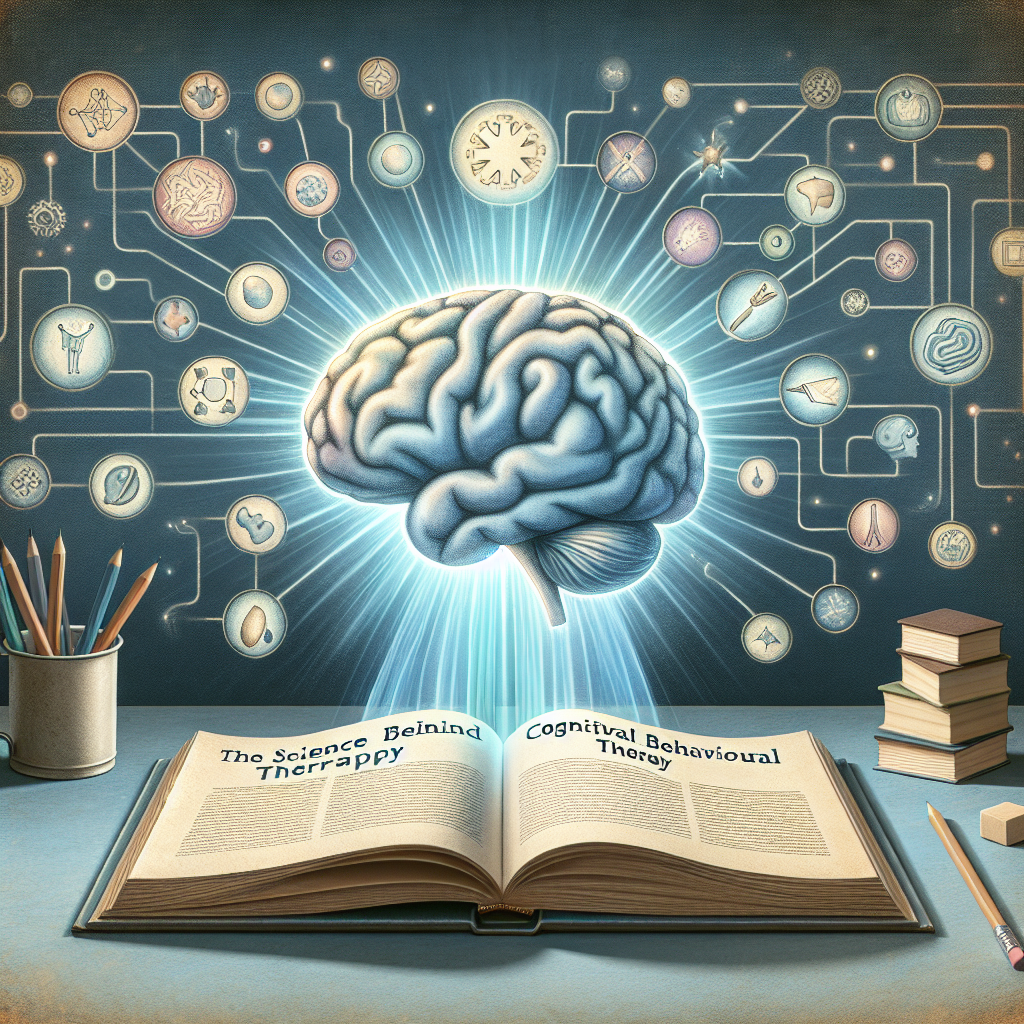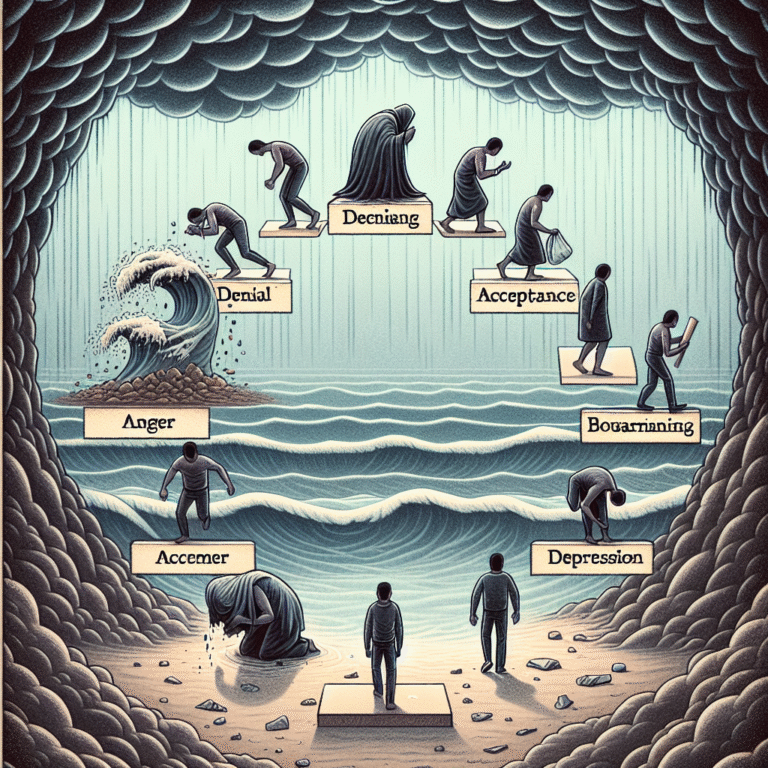
The Ultimate Guide to The Science Behind Cognitive Behavioral Therapy: How it Changes Lives
Introduction
In a world where mental health issues are increasingly common, understanding effective therapeutic approaches is crucial. Enter Cognitive Behavioral Therapy (CBT), a revolutionary practice that has changed countless lives. The science behind cognitive behavioral therapy is not only compelling but also transformative, making it one of the most widely used techniques in mental health treatment today. The Science Behind Cognitive Behavioral Therapy: How it Changes Lives isn’t just a tagline; it’s a powerful statement about the potential of CBT to empower individuals to take control of their thoughts and emotions.
Imagine transforming your life by recognizing and altering negative thought patterns. This article dives deep into the mechanisms of CBT, showcases real-world case studies, and elaborates on how careers, relationships, and lifestyles can be improved through this science-backed therapy.
Understanding Cognitive Behavioral Therapy
What is Cognitive Behavioral Therapy?
Cognitive Behavioral Therapy is a structured, goal-oriented psychotherapy that focuses on the interconnections between thoughts, feelings, and behaviors. Unlike other therapeutic approaches that may dive into past experiences, CBT emphasizes the present. It operates on the premise that our thoughts shape our feelings and, consequently, our behaviors. By identifying and challenging dysfunctional thoughts, individuals can change detrimental patterns that limit their effectiveness and happiness.
The Theoretical Foundations of CBT
CBT is grounded in cognitive and behavioral theories.
- Cognitive Theory posits that our cognitive processes influence our emotions and behaviors. Maladaptive thought patterns can lead to emotional distress and poor coping strategies.
- Behavioral Theory suggests that changing one’s behaviors can significantly impact emotions and thoughts over time.
Together, these theories underpin the CBT approach, offering a robust framework for individuals seeking change.
The Mechanisms of Change: How CBT Works
Identifying and Challenging Negative Thoughts
One of the core tenets of The Science Behind Cognitive Behavioral Therapy: How it Changes Lives is the process of identifying negative automatic thoughts (NATs). These are often subconscious thoughts that arise in response to various situations, and they can spiral into a cycle of negativity.
- Example: A student receives a low grade on an exam and thinks, “I’m a failure.” This NAT can lead to feelings of despair and further disengagement from studies.
CBT helps individuals recognize these thoughts, challenge their validity, and replace them with more balanced alternatives.
Behavioral Activation
Behavioral activation is another essential mechanism in CBT, particularly for individuals battling depression. This technique encourages individuals to engage in pleasurable or meaningful activities that may have been avoided. By doing so, individuals can experience an improvement in mood, mitigate feelings of isolation, and develop a sense of achievement.
Skills Development
CBT also focuses on building specific skills, such as:
- Problem-solving strategies
- Stress management techniques
- Communication skills
By equipping individuals with these tools, CBT enables them to handle future challenges effectively.
Homework Assignments
In the spirit of fostering independence, CBT often includes homework assignments tailored to reinforce the principles learned during sessions. This proactive approach encourages individuals to practice new skills, recognize achievements, and track their progress towards achieving emotional well-being.
Case Studies: Real-World Applications of CBT
Case Study 1: Sarah’s Anxiety Transformation
Background: At 28, Sarah struggled with social anxiety, impacting her professional life. She often felt drained before social interactions and feared negative judgment.
CBT Approach: Through CBT, Sarah identified her NATs, including thoughts like "Everyone is judging me." Her therapist helped her challenge these thoughts and engage in gradual exposure exercises to social situations.
Outcome: After six months of therapy, Sarah felt a significant reduction in anxiety and was able to attend social events without overwhelming distress.
Analysis
Sarah’s case illustrates The Science Behind Cognitive Behavioral Therapy: How it Changes Lives by demonstrating how cognitive restructuring and exposure therapy can alleviate anxiety symptoms and enhance social functioning.
Case Study 2: John’s Battle with Depression
Background: John was a 45-year-old engineer who had succumbed to depression after a series of personal losses. His motivation waned, and daily activities felt insurmountable.
CBT Approach: John’s therapist employed behavioral activation to reintegrate joy into his life. They established a schedule that included activities he once enjoyed, like cycling and volunteering.
Outcome: Over time, John regained his enthusiasm for life, creating a balanced routine that fostered emotional well-being.
Analysis
John’s transformation showcases the effectiveness of behavioral activation—a crucial component of CBT—in combating depression and reconstructing a fulfilling life, highlighting an essential aspect of The Science Behind Cognitive Behavioral Therapy: How it Changes Lives.
Key Principles of CBT
1. Structure and Goal-Orientation
CBT is structured, typically involving a set number of sessions focused on specific goals. This methodology ensures that both therapists and clients can track progress effectively.
2. Collaborative Nature
CBT is highly collaborative, requiring active participation from both the therapist and the client. This partnership enhances accountability and engagement, leading to better outcomes.
3. Emphasis on Education
An essential component of CBT involves educating clients about the cognitive model. Understanding how thoughts can significantly influence feelings and behaviors empowers individuals to take an active role in their change process.
Benefits of Cognitive Behavioral Therapy
Accessibility
CBT has shown that it can be taught in various formats—individual therapy, group settings, online modules—making it accessible to a broad audience.
Time-Efficiency
Typically, CBT is short-term, lasting anywhere from 6 to 20 sessions. This efficiency makes it a popular choice for individuals seeking rapid improvement.
Proven Effectiveness
Numerous studies validate the efficacy of CBT for various conditions, including:
- Anxiety Disorders
- Depression
- PTSD
- OCD
Table 1: Effectiveness of CBT for Common Mental Health Conditions
| Condition | Effectiveness Rate (%) | Notes |
|---|---|---|
| Generalized Anxiety | 70-75% | Long-term reductions post-therapy. |
| Depression | 60-70% | Efficacy may increase with follow-up. |
| PTSD | 60-80% | Best results when combined with exposure. |
| OCD | 50-70% | CBT combined with medication may be superior. |
Conclusion
The Science Behind Cognitive Behavioral Therapy: How it Changes Lives is an ongoing journey of understanding and empowerment. CBT is more than just a therapeutic technique; it is a gateway to transformation. Individuals equipped with the skills to challenge negative thoughts and engage in meaningful behaviors can truly alter their life trajectories.
As you consider embarking on your journey with CBT, remember that change is possible. Seeking help isn’t a sign of weakness; it’s a powerful step towards a more fulfilling life. Whether you’re experiencing mental health challenges or simply want to enhance your emotional resilience, CBT offers practical, science-backed pathways toward healing and growth.
FAQs About Cognitive Behavioral Therapy
1. How long does CBT take to work?
CBT typically requires 6 to 20 sessions, depending on the individual and the nature of the issues being addressed. Many begin to notice positive changes sooner.
2. Is CBT effective for children and adolescents?
Absolutely! CBT is suitable for children and adolescents and is adapted to their developmental stages.
3. Can CBT be done online?
Yes, many therapists offer CBT through teletherapy platforms, making it accessible from the comfort of your home.
4. Is medication necessary with CBT?
While some may benefit from medication, CBT alone can be effective for many individuals. Always consult a mental health professional for personalized advice.
5. How can I find a qualified CBT therapist?
You can find a qualified CBT therapist through professional associations, online directories, or local mental health clinics. Always verify their credentials and ask about their experience in CBT.
By delving into The Science Behind Cognitive Behavioral Therapy: How it Changes Lives, we can uncover the profound potential this evidence-based approach has in transforming individuals’ mental health, relationships, and quality of life. Embrace this journey and take the first step toward a brighter future.











